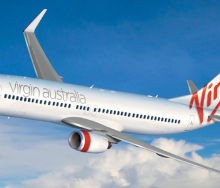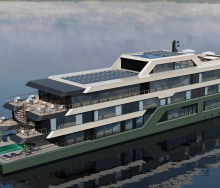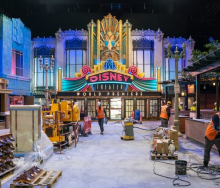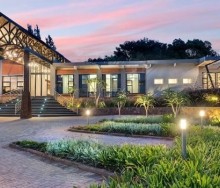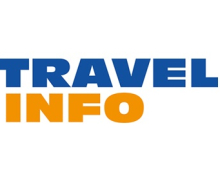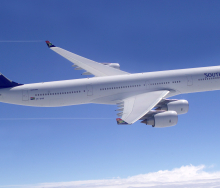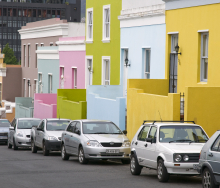GOVERNMENT could save more than 250 000 jobs in South Africa’s air transport sector if it spent the R35,5bn needed to save SAA, on subsidising the industry as a whole.
How do I get to this conclusion? Let me explain: According to Iata, some 252 100 South African jobs and R93bn of GDP generated by aviation directly and by air transport-dependent tourism are at risk because of a R55bn/56% drop in local airline revenue this year due to COVID-19 travel restrictions.
For months now, Iata, AASA and Barsa have lobbied government to provide some form of financial relief to the cash-strapped industry – without much success. Specific relief sought includes concessions on airport and air traffic control charges and taxes; and reductions, waivers and deferrals of statutory taxes and user-fees imposed on flights and passenger tickets.
Airports Company SA (itself in need of government guarantees to secure R10bn loans because of the COVID-19 impact and its downgrade by Moody’s) doesn’t have the means to reduce passenger and aircraft landing fees. Acsa’s total aeronautical revenue in 2019 was just under R4bn. This means if Government spent R35,5bn on subsiding Acsa, the company could fully discount passenger and landing fees for more than eight years – benefiting the entire air transport and related industries, and potentially saving 250 000 jobs! The same rationale could be applied to charges levied by State-owned entities ATNS, SACAA and SA Weather Services (SAWS).
FlySafair executive manager and chief marketing officer, Kirby Gordon, adds a different spin to my equation: “FlySafair holds the biggest domestic market share of 22%. If I use our revenue number and extrapolate that to a domestic industry revenue number, I get about R15,3bn. If that R35,5bn were invested in the existing domestic airlines, South Africans would be able to fly free of charge for more than two years!”
SAA’s minor domestic market share
This argument is further strengthened by the fact that SAA – according to stats from global data provider OAG –was only the fifth biggest domestic carrier in 2018 and 2019, holding only 10% market share on seat capacity on all domestic routes. SAA still held the most market share (21%) on international seat capacity in 2019. But one could argue it had already stopped flying a lot of its international routes before the COVID-19 crisis and, with the exception of regional African routes, will fly very few international ones in future, according to the business rescue plan.
This begs the questions: Is government’s rescue of SAA anti-competitive and unjustified, particularly given its minor role domestically?
Fair competition
Absolutely, says aviation economist Joachim Vermooten. He points out that government’s bail-out of SAA is, in fact, at odds with the government’s own domestic air transport policy, which states: ‘To achieve effective and fair competition, it is important to treat all air carriers equally. This principle applies specifically to a situation where a government enterprise competes with a private enterprise in the same market. The need for equal treatment is often referred to as the need to ‘level the playing field’ and is generally regarded as important.
“Private-sector airlines also require state financial assistance due to government regulations affecting the market and state financial aid granted to SAA,” says Joachim. “Government is the enabler and regulator of the air transport industry in South Africa, and also a participant in a competitive market. Due to this conflict, it is necessary to level the playing field to achieve competitive neutrality contained in equal treatment of all market participants. The principle of equal treatment implies that all participants in the air transport market should be treated equally in terms of legislation, rules and opportunities.”
However, far from adhering to the equal treatment principle, state aid for years has favoured government’s own carrier at the expense of private-sector carriers.
“A total of R67,9bn (R14,6bn under Transnet control and R53,3bn under government control) was lost in funding SAA and a further R32,1bn debt was incurred (which the business rescue practitioners are proposing to settle for R24,6bn). This includes underwriting SAA’s typical losses and losses incurred by SAA under the COVID-19 grounding orders and restrictions. Yet, despite the excessive level of discriminatory state aid granted, SAA’s production declined to only 10% of the seats produced in the domestic market, with the other three private carriers and Mango each operating about double SAA’s activity level,” he says.
In addition, SAA’s business rescue practitioners have set a total of R26,9bn as a condition precedent to the business plan (R10,5bn to restart SAA and meet liabilities with Treasury already committed to repaying lenders R16,4bn over the next three years). However, Joachim estimates R35,5bn to R43,4bn is needed to save the airline: R24,9bn to lay off staff and repay preferred creditors; R2,8bn restart capital; R2,15bn for Mango, SAA Technical and Air Chefs; R6,4bn of losses and new debt of R12bn after five years, which peaks at R14,3bn at year three, based on optimistic assumptions.
Bailout indemnifies SAA against COVID-19 losses
Joachim says government’s current COVID-19 restrictions also impede the return of a healthy competitive air transport market, as the funding envisaged in the BRPs’ business rescue plan indemnifies SAA against the impact of losses incurred during this period, while no such assistance has been made available to other private-sector carriers. “Elsewhere, state aid is made available to preserve air transport industries as essential for post-COVID 19 economies. This is, however, granted to all airlines on a pro-rata basis rather than to ensure the survival of a single state-owned carrier, as is the case in South Africa,” he points out. For instance, the US government uses an Essential Air Service programme to guarantee scheduled passenger services to small, often remote, communities across the US through a system of subsidisation.
Turning back the clock on deregulation
After 56 years, South Africa emerged from a state-subsidised air transport monopoly in 1990, when the economic control in the domestic market was abolished and a more competitive market emerged. However, Joachim warns that the granting of state financial aid to SAA and regulating demand and supply in the market on uneconomic levels could turn back the clock to an effective subsidised air transport monopoly in domestic air services. He says South African air travellers have benefited from the competition, quality of service and pricing that developed in the domestic air transport market since 1990. “For this to remain, the private-sector airlines must be supported to bridge the period of COVID-19 market restrictions,” he says.


